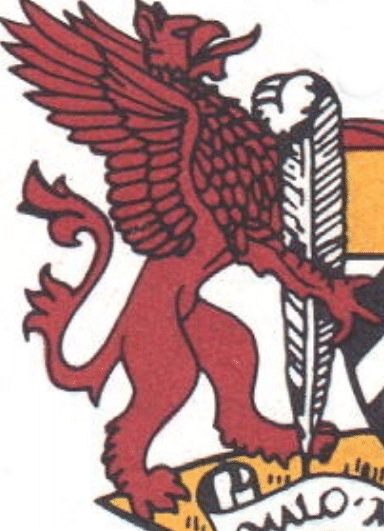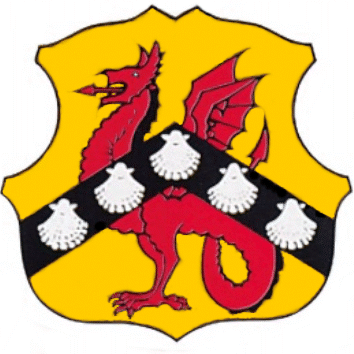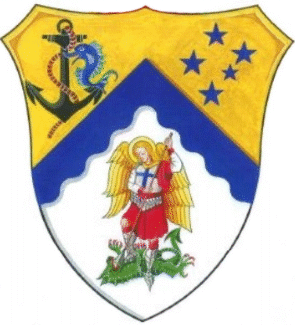Themes – mythical and fantastical creatures
To learn more about the arms illustrated, click on the images.
THE mediæval heralds were not scientists, but military staff officers who believed what the learned scholars at the universities told them. And if the scholars believed that fantastical creatures like dragons and griffins existed, who was any mere herald to disagree? So the strange creatures catalogued by the learned men of those times found their way into coats of arms, as did animals that really do exist, doing things that modern zoologists scoff at, like pelicans that wounded themselves to feed their young. Indeed, many mythological creatures became so firmly entrenched in heraldry because of their symbolism that it was well nigh impossible to eradicate them, even when science proved that they had either never existed or could not do what they were reputed to. South African heraldry does have some of them. Here are the griffin (an amalgam of eagle and lion) and the phoenix, a bird which, according to Egyptian legend, lived for 100 years and then returned to its nest, where it was consumed by flames and was then reborn.


The dragon is a traditional symbol used in Wales and England – it was used by the kings of Wessex as well as the native British – as well as on the Continent. On mainland Europe it normally has two legs and a long tail, but in Britain a distinction is made between the two-legged wyvern and the four-legged dragon. In either form, it can be shown being killed by either the Archangel Michael or by St George.


Then there is the unicorn, a creature originally derived from the goat, or so the heralds believed, but often drawn as a horse with a single horn on its forehead. Note the tufts of hair at the joints of the second unicorn shown here. Some contend that the legend of the unicorn is based on sightings of the gemsbok or oryx, where the observer saw only one of its two horns. At any rate, the horn is held to have magical properties. Legend also has it that only a virgin can capture a unicorn without harm to either herself or the creature. The first unicorn shown here is most unusual: its colouring is palomino.
Back to top of page
Back to themes index
Back to Armoria index
Comments, queries: Mike Oettle



